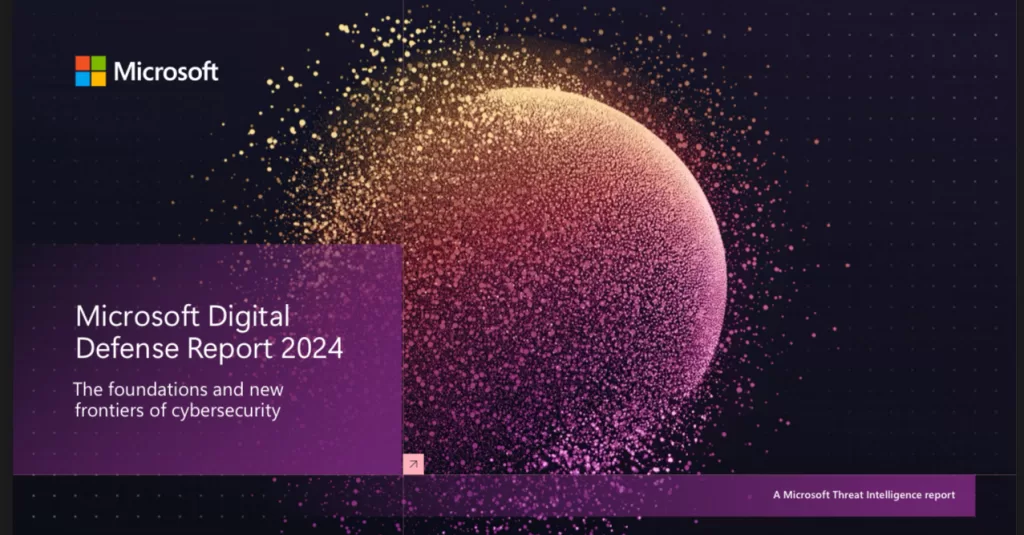Microsoft’s latest Digital Defense Report highlights an alarming rise in the complexity and scale of cyber threats, urging a collective defense strategy to counter both state-sponsored and criminal attacks. The Digital Defense Report 2024 provides an in-depth overview of the latest changes in the global cybersecurity landscape. The report outlines significant shifts in the nature of cybersecurity threats and cyberattack patterns across multiple countries, focusing on ransomware, fraud, and identity and social engineering attacks. In response to these developments, Microsoft emphasizes the need to adopt key cybersecurity practices, including strengthening defenses in an AI-driven era.
Panji Wasmana, National Technology Officer at Microsoft Indonesia, highlighted the importance of collective responsibility in cybersecurity. He emphasized that addressing cybersecurity threats is not solely the responsibility of the IT team; instead, it involves every individual within an organization. Wasmana pointed out the benefits of implementing Zero Trust principles. That entails practices like always verifying user identities, limiting data and device access, and assuming a breach has occurred. He also recommended using passkeys—digital keys protected by biometric data or a PIN—as a more secure alternative to traditional passwords.
Our summary of the report follows; you can read it all here.

Rising Cybersecurity Threat Landscape
The Microsoft Digital Defense Report 2024 presents an increasingly complex and hazardous cyber threat landscape, emphasizing the urgency for improved defense and global collaboration against cybersecurity threats. Tom Burt, Microsoft’s Vice President of Customer Security and Trust, stressed that the sophistication of cyberattacks has escalated over the past year, with state-sponsored and financially motivated attackers alike refining their tactics. The report identifies that both nation-state threat actors and cybercriminals are evolving, utilizing more advanced tools, techniques, and resources to target individuals, organizations, and even critical infrastructure.
Blurring Lines Between Nation-States and Cybercriminals
One of the most alarming trends highlighted in the report is the blurring lines between nation-state actors and cybercriminals. Many state-sponsored hackers, including those from Russia, Iran, and North Korea, are increasingly enlisting cybercriminals to advance their interests. The report points out that North Korean actors have stolen over $3 billion in cryptocurrency since 2017, using the funds to support the country’s nuclear and missile programs. Additionally, Iranian groups have adopted financial motivations, with some operations appearing as ransomware attacks to mask destructive activities.
Massive Surge in Identity Attacks
The report also reveals that the volume of identity attacks is staggering—600 million per day—as attackers shift focus to bypass multifactor authentication (MFA). This has prompted a renewed call for enhanced defense strategies against cybersecurity threats, which Burt emphasized as crucial in ensuring the safety of networks, data, and people at all levels. Microsoft, too, has faced sophisticated cyberattacks, underlining the universal nature of this threat and the need for collective action to counter it.
Hybrid Warfare and Influence Campaigns
Hybrid warfare remains a significant concern in the realm of cybersecurity threats, as evidenced by Iran’s surge in cyber operations following the outbreak of the Israel-Hamas war. Iranian threat actors have used influence operations to undermine international support for Israel, leveraging cyber-enabled campaigns to spread divisive and misleading narratives. Similarly, Russian cyber operations continue to focus on Ukraine and its allies, employing tactics like USB-delivered worms and malicious torrents to compromise devices and gather intelligence.
AI as a Double-Edged Sword in Cybersecurity
The impact of AI on cybersecurity threats is a key theme throughout the report. Burt notes that while AI presents opportunities for defense, it also poses new challenges as adversaries explore its potential for malicious purposes. Microsoft has invested heavily in AI to give defenders an asymmetric advantage in the cybersecurity battle, helping to detect cyberattacks and mitigate risks before they escalate.
Microsoft’s Secure Future Initiative
Microsoft’s Secure Future Initiative (SFI) is another major focus, aimed at putting security above all other corporate considerations and addressing cybersecurity threats. Igor Tsyganskiy, Microsoft’s Chief Information Security Officer, outlined steps taken to improve their defense posture, including making MFA mandatory across the company and expanding monitoring teams. The initiative reflects a shift towards “secure by design, secure by default, and operationally secure” principles that Microsoft hopes to share with other organizations.
The Call for Global Collaboration
The report also underscores the need for international collaboration and improved governance to enhance cybersecurity. Microsoft recommends that governments strengthen international norms of conduct in cyberspace, make public attributions of malicious activity more effective, and impose deterrent consequences for cybersecurity threats and cyberattacks. By enhancing digital diplomacy and encouraging multilateral and bilateral agreements, governments can help create a safer global digital environment.
The Power of Public-Private Partnerships
The power of public-private partnerships is highlighted as a critical component of effective cybersecurity defense. The partnership between Microsoft and the Australian Signals Directorate (ASD), known as the Microsoft-ASD Cyber Shield (MACS), is cited as an example of how collaboration can bolster national cybersecurity efforts. The partnership enabled sanctions against perpetrators of a ransomware attack on Australia’s largest medical insurance company and helped enhance the country’s cyber resilience.
A Call to Action
The report concludes by emphasizing the critical need for robust cybersecurity measures across sectors, as well as the importance of staying a step ahead of attackers in an increasingly AI-driven world. Collaboration, transparency, and a shared commitment to defense are essential to counter the rising tide of cybersecurity threats and to protect the global cyber ecosystem effectively. As Satya Nadella, Microsoft’s CEO, aptly put it, “This is a consequential time,” and it will take a conscientious commitment from both the public and private sectors to ensure that defenders come out on top in the ongoing struggle for cybersecurity.
Other News: Unprecedented Cyberattack and The Role of Insurance(Opens in a new browser tab).
Other News: Six IT contractors accused of swindling Uncle Sam out of millions.